
Avalon-LLM
This repository contains a LLM benchmark for the social deduction game `Resistance Avalon'
Stars: 69
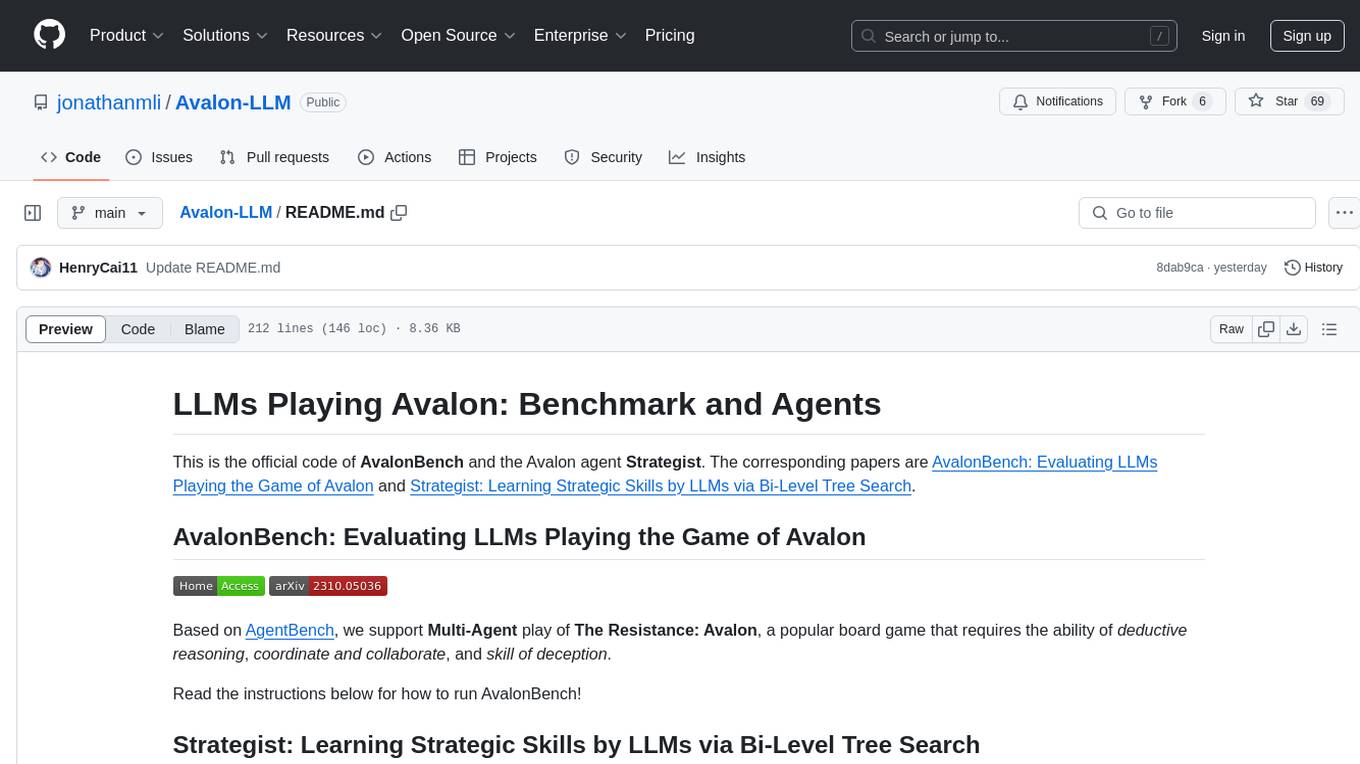
Avalon-LLM is a repository containing the official code for AvalonBench and the Avalon agent Strategist. AvalonBench evaluates Large Language Models (LLMs) playing The Resistance: Avalon, a board game requiring deductive reasoning, coordination, collaboration, and deception skills. Strategist utilizes LLMs to learn strategic skills through self-improvement, including high-level strategic evaluation and low-level execution guidance. The repository provides instructions for running AvalonBench, setting up Strategist, and conducting experiments with different agents in the game environment.
README:
This is the official code of AvalonBench and the Avalon agent Strategist. The corresponding papers are AvalonBench: Evaluating LLMs Playing the Game of Avalon and Strategist: Learning Strategic Skills by LLMs via Bi-Level Tree Search.
Based on AgentBench, we support Multi-Agent play of The Resistance: Avalon, a popular board game that requires the ability of deductive reasoning, coordinate and collaborate, and skill of deception.
Read the instructions below for how to run AvalonBench!
In this work, we propose Strategist, which utilizes LLMs to acquire new skills for playing multi-agent games through a self-improvement process. Our method gathers quality feedback through self-play simulations with Monte Carlo tree search and LLM-based reflection, which can then be used to learn high-level strategic skills such as how to evaluate states that guide the low-level execution.
You can learn how to play with Strategist on AvalonBench at here, and the code/usage for bi-level tree search of Strategist can be found at the strategist folder.
- [2024/08] 🔥Try out our new agent, Strategist, by using the
avalon-dev-single-discussconfig, and find more details at Strategist: Learning Strategic Skills by LLMs via Bi-Level Tree Search! - [2024/07] Our new agent
SearchlightLLMAgentWithDiscussionis available atsrc/server/tasks/avalon/agents/search_agent.py. The academic paper will be coming soon. - [2023/11] 🎶Multi-LLM setting with AgentBench v0.2 is ready to roll! Details of the multi-agent submodule can be found here
- [2023/11]
♠️ We've added a new game called GOPS (Game of Pure Strategy [Wiki]). For more details of the code, please refer to here. - [2023/10] 🤖We've updated our code based on AgentBench v0.2. For the older version, please visit here.
GPT-3.5-turbo🤖 playing against rule-based bots in AvalonBench
https://github.com/jonathanmli/Avalon-LLM/assets/24936331/e15eadc0-60e6-448d-88a0-854ba35d628c
GPT-4-turbo🤖 playing against rule-based bots in AvalonBench
https://github.com/jonathanmli/Avalon-LLM/assets/24936331/23fcb204-7570-4449-8777-b179c25251ad
GPT-3.5-turbos🤖 playing against each other
https://github.com/jonathanmli/Avalon-LLM/assets/24936331/9257d081-67ff-43d4-bbcf-b20415b32595
Here are the results of LLMs playing against baseline bots.
We also let LLMs playing against each other. Evil has an 8:2 advantage over Good, which is similar to the stats of rookie human players! Here are also some examples of discussion under this setting.
Install the dependencies.
conda create -n avalonbench python=3.9
conda activate avalonbench
pip install -r requirements.txtYou need to fill your OPENAI API KEY in configs/agents/openai-chat first. Please replace <OPENAI_API_KEY> in Bearer <OPENAI_API_KEY> with your key.
Start the game (3 is the number of workers)
python -m src.start_task -a --start avalon-dev-single 3Open a new terminal and start the assigner
python -m src.assigner --config ./configs/assignments/test_avalon.yaml- You can modify the file
configs/tasks/avalon.yamlto configure the agent list. A config file looks like this:
default:
module: "src.server.tasks.avalon.AvalonBench"
parameters:
num_players: 5
discussion: False
avalon-dev-naive:
parameters:
name: "AvalonBench-dev-naive"
data_file: "data/avalon/dev.json"
agent_list: ["naive", "naive", "naive", "naive", "naive"]
avalon-dev-single:
parameters:
name: "AvalonBench-dev-single"
data_file: "data/avalon/dev.json"
agent_list: ["llm", "naive", "naive", "naive", "naive"]where naive stands for the naive bots. Agents will play the roles with the same index in the data file (see following).
Note: There should only be one "llm" in the `agent_list`
- You can also add data in
data/avalon/dev.json(Note: Currently we only support the 5-player game setting, which includes 1 Merlin, 2 Servants, 1 Minion and 1 Assassin). A data item looks like this:
{
"num_players": 5,
"quest_leader": 0,
"role_names": ["Assassin", "Servant", "Servant", "Merlin", "Minion"]
}where quest_leader is the id of the initial quest leader in this game. You can change the game setup by altering quest_leader with number from 0 to 4, and by permuting role_names.
You can also start a naive experiment using:
python -m src.start_task -a --start avalon-dev-naive 3where all the agents are naive bots. For details of the naive strategies, please refer to the paper.
You can also start a Multi-LLM experiment using:
python -m src.start_task -a --start avalon-dev-multi 3where all the agents will be Large Language Models.
Our agent, Strategist, is also available in this repo. You can start the experiment using:
# Strategist playing against naive baselines
python -m src.start_task -a --start avalon-dev-single-search 1All the prompts are maintained in src/server/tasks/avalon/prompt.py. You can find the respective prompts used in src/server/tasks/avalon/agents/llm_with_discussion.py and src/server/tasks/avalon/wrapper.py.
We also provide our engines along with examples of usage for developers in avalonbench_dev.
You can import and use the game engine by running
from engine import AvalonGameEnvironment, AvalonConfigFirst input your game configurations into AvalonBasicConfig, then create an AvalonGameEnvironment based on that.
For an example of how to use the game engine, see avalonbench_dev/avalon/test_engine.py
@inproceedings{
light2023from,
title={AvalonBench: Evaluating {LLM}s Playing the Game of Avalon},
author={Jonathan Light and Min Cai and Sheng Shen and Ziniu Hu},
booktitle={NeurIPS 2023 Foundation Models for Decision Making Workshop},
year={2023},
url={https://openreview.net/forum?id=ltUrSryS0K}
}
For Tasks:
Click tags to check more tools for each tasksFor Jobs:
Alternative AI tools for Avalon-LLM
Similar Open Source Tools

Avalon-LLM
Avalon-LLM is a repository containing the official code for AvalonBench and the Avalon agent Strategist. AvalonBench evaluates Large Language Models (LLMs) playing The Resistance: Avalon, a board game requiring deductive reasoning, coordination, collaboration, and deception skills. Strategist utilizes LLMs to learn strategic skills through self-improvement, including high-level strategic evaluation and low-level execution guidance. The repository provides instructions for running AvalonBench, setting up Strategist, and conducting experiments with different agents in the game environment.
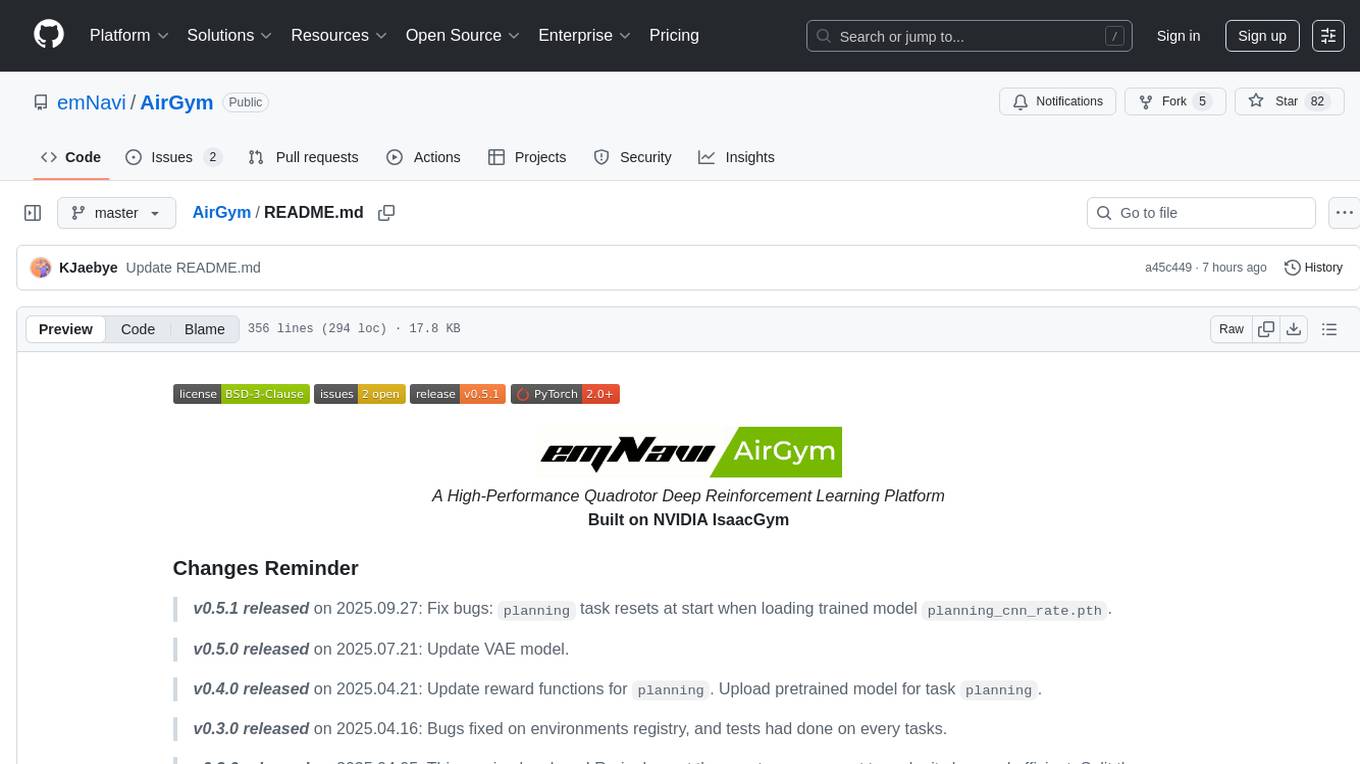
AirGym
AirGym is an open source Python quadrotor simulator based on IsaacGym, providing a high-fidelity dynamics and Deep Reinforcement Learning (DRL) framework for quadrotor robot learning research. It offers a lightweight and customizable platform with strict alignment with PX4 logic, multiple control modes, and Sim-to-Real toolkits. Users can perform tasks such as Hovering, Balloon, Tracking, Avoid, and Planning, with the ability to create customized environments and tasks. The tool also supports training from scratch, visual encoding approaches, playing and testing of trained models, and customization of new tasks and assets.
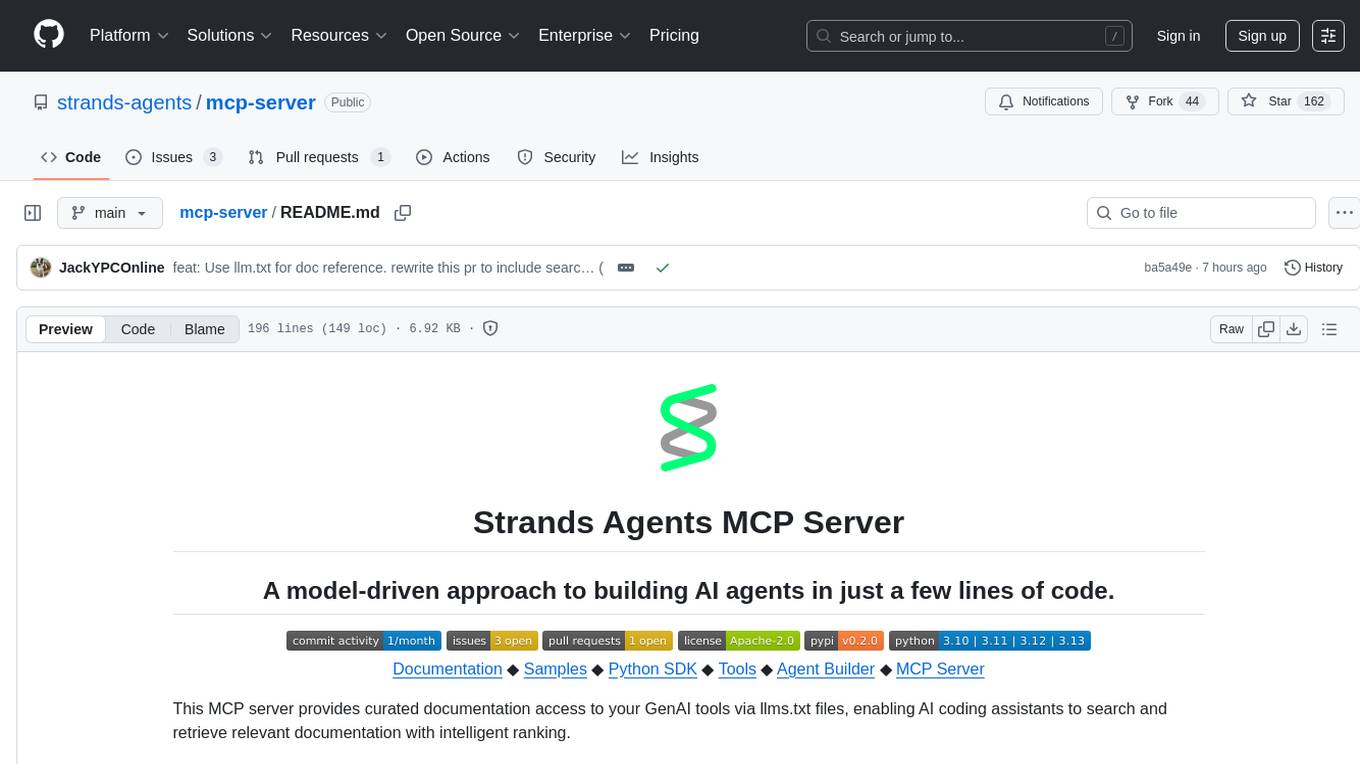
mcp-server
The Strands Agents MCP Server is a model-driven approach to building AI agents in just a few lines of code. It provides curated documentation access to GenAI tools via llms.txt files, enabling AI coding assistants to search and retrieve relevant documentation with intelligent ranking. Features include smart document search, curated content indexing, on-demand fetching, snippet generation, and real URL support. The server can be used with various applications that support MCP servers, such as Amazon Q Developer CLI, Anthropic Claude Code, Cline, and Cursor. Users can quickly test the MCP server using the MCP Inspector and follow the provided steps to configure their MCP client and start using the documentation tools. The project welcomes contributions and is licensed under the Apache License 2.0.
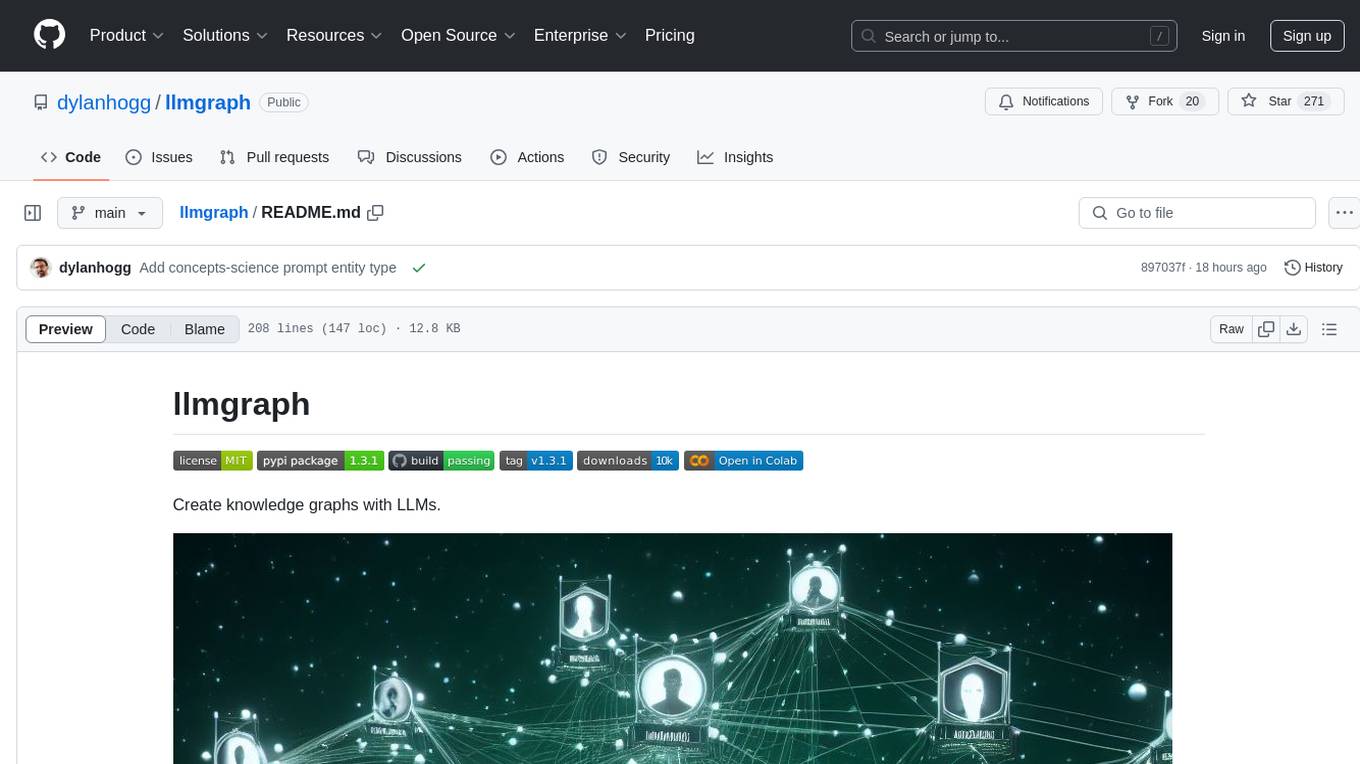
llmgraph
llmgraph is a tool that enables users to create knowledge graphs in GraphML, GEXF, and HTML formats by extracting world knowledge from large language models (LLMs) like ChatGPT. It supports various entity types and relationships, offers cache support for efficient graph growth, and provides insights into LLM costs. Users can customize the model used and interact with different LLM providers. The tool allows users to generate interactive graphs based on a specified entity type and Wikipedia link, making it a valuable resource for knowledge graph creation and exploration.
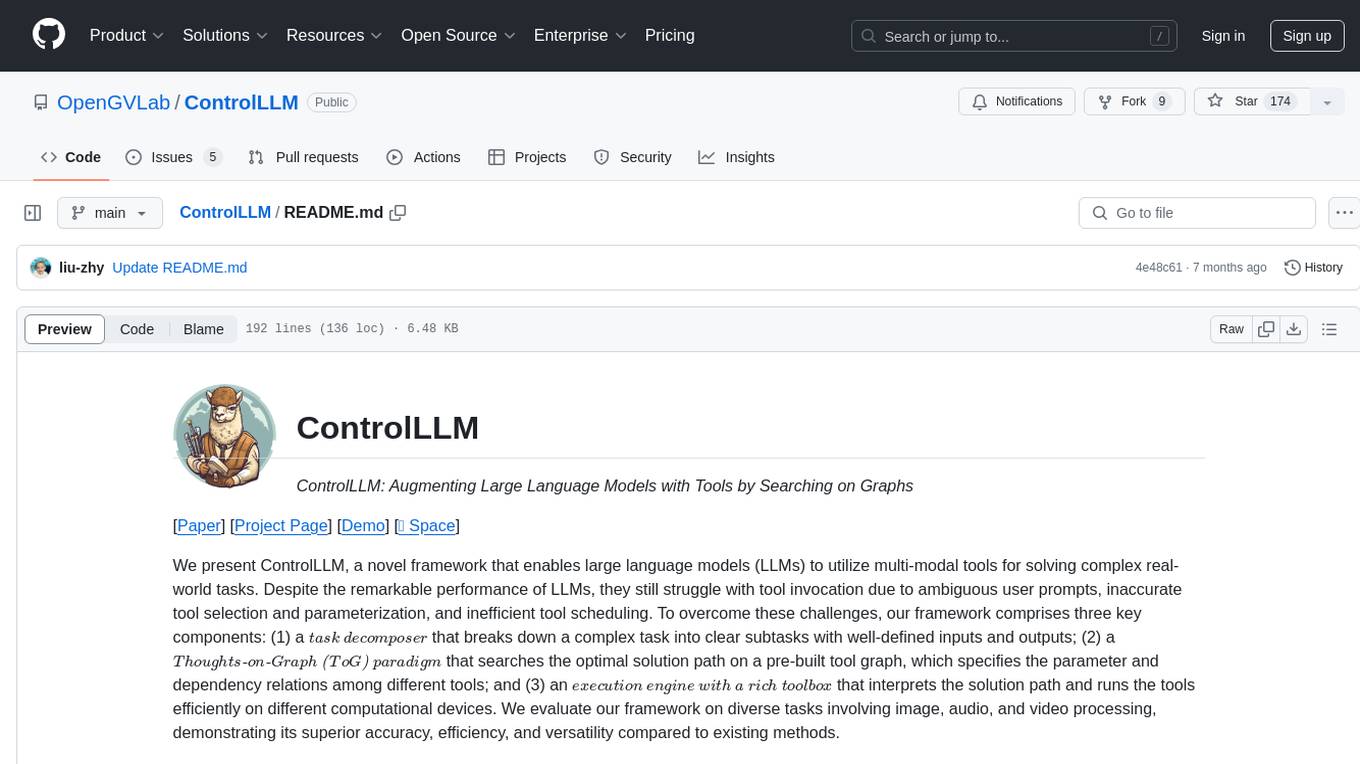
ControlLLM
ControlLLM is a framework that empowers large language models to leverage multi-modal tools for solving complex real-world tasks. It addresses challenges like ambiguous user prompts, inaccurate tool selection, and inefficient tool scheduling by utilizing a task decomposer, a Thoughts-on-Graph paradigm, and an execution engine with a rich toolbox. The framework excels in tasks involving image, audio, and video processing, showcasing superior accuracy, efficiency, and versatility compared to existing methods.
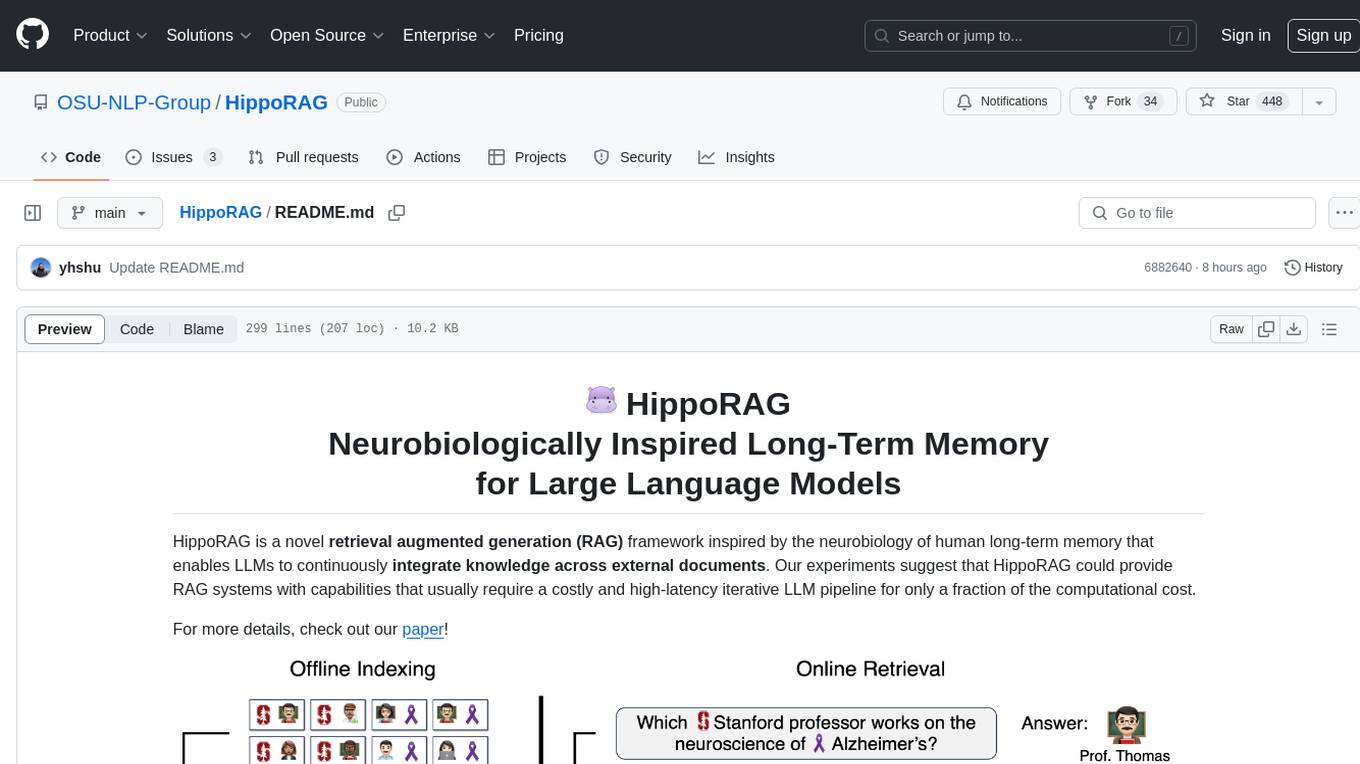
HippoRAG
HippoRAG is a novel retrieval augmented generation (RAG) framework inspired by the neurobiology of human long-term memory that enables Large Language Models (LLMs) to continuously integrate knowledge across external documents. It provides RAG systems with capabilities that usually require a costly and high-latency iterative LLM pipeline for only a fraction of the computational cost. The tool facilitates setting up retrieval corpus, indexing, and retrieval processes for LLMs, offering flexibility in choosing different online LLM APIs or offline LLM deployments through LangChain integration. Users can run retrieval on pre-defined queries or integrate directly with the HippoRAG API. The tool also supports reproducibility of experiments and provides data, baselines, and hyperparameter tuning scripts for research purposes.
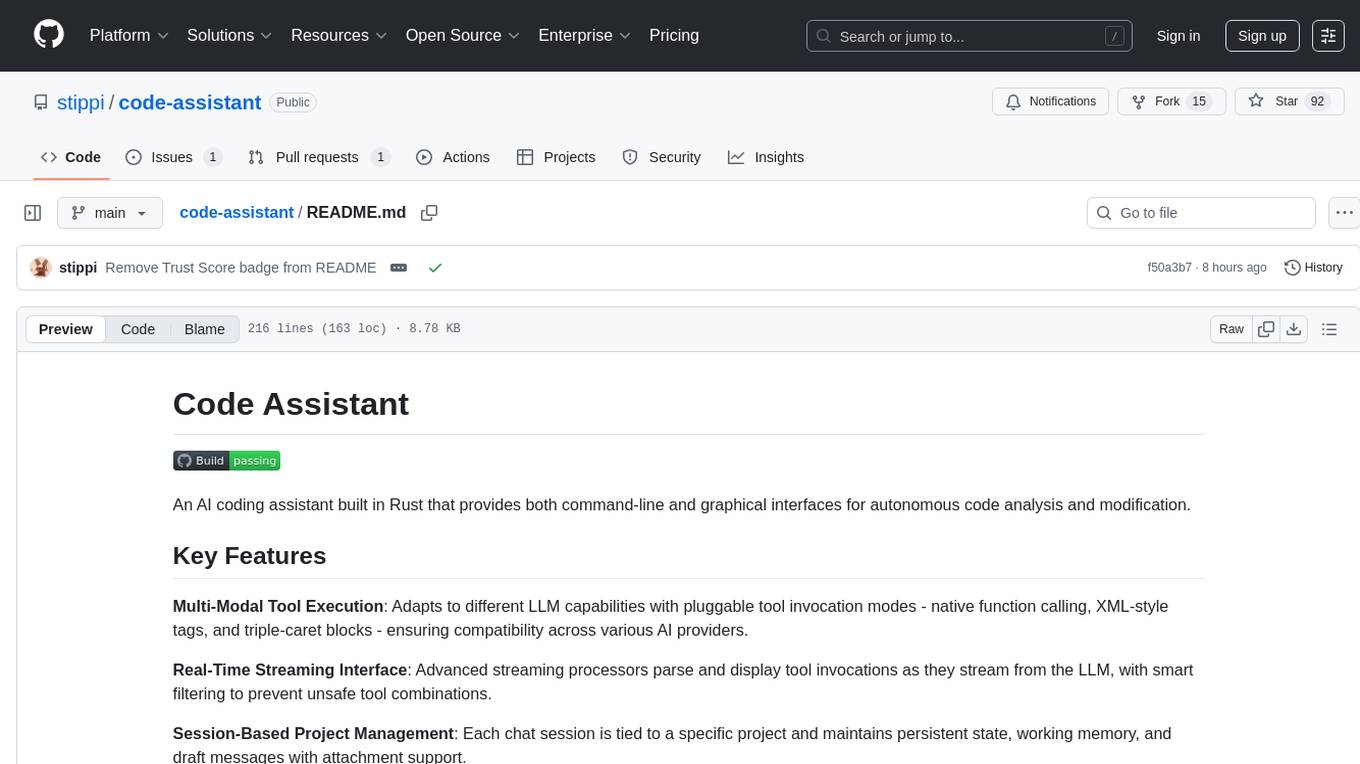
code-assistant
Code Assistant is an AI coding tool built in Rust that offers command-line and graphical interfaces for autonomous code analysis and modification. It supports multi-modal tool execution, real-time streaming interface, session-based project management, multiple interface options, and intelligent project exploration. The tool provides auto-loaded repository guidance and allows for project configuration with format-on-save feature. Users can interact with the tool in GUI, terminal, or MCP server mode, and configure LLM providers for advanced options. The architecture highlights adaptive tool syntax, smart tool filtering, and multi-threaded streaming for efficient performance. Contributions are welcome, and the roadmap includes features like block replacing in changed files, compact tool use failures, UI improvements, memory tools, security enhancements, fuzzy matching search blocks, editing user messages, and selecting in messages.
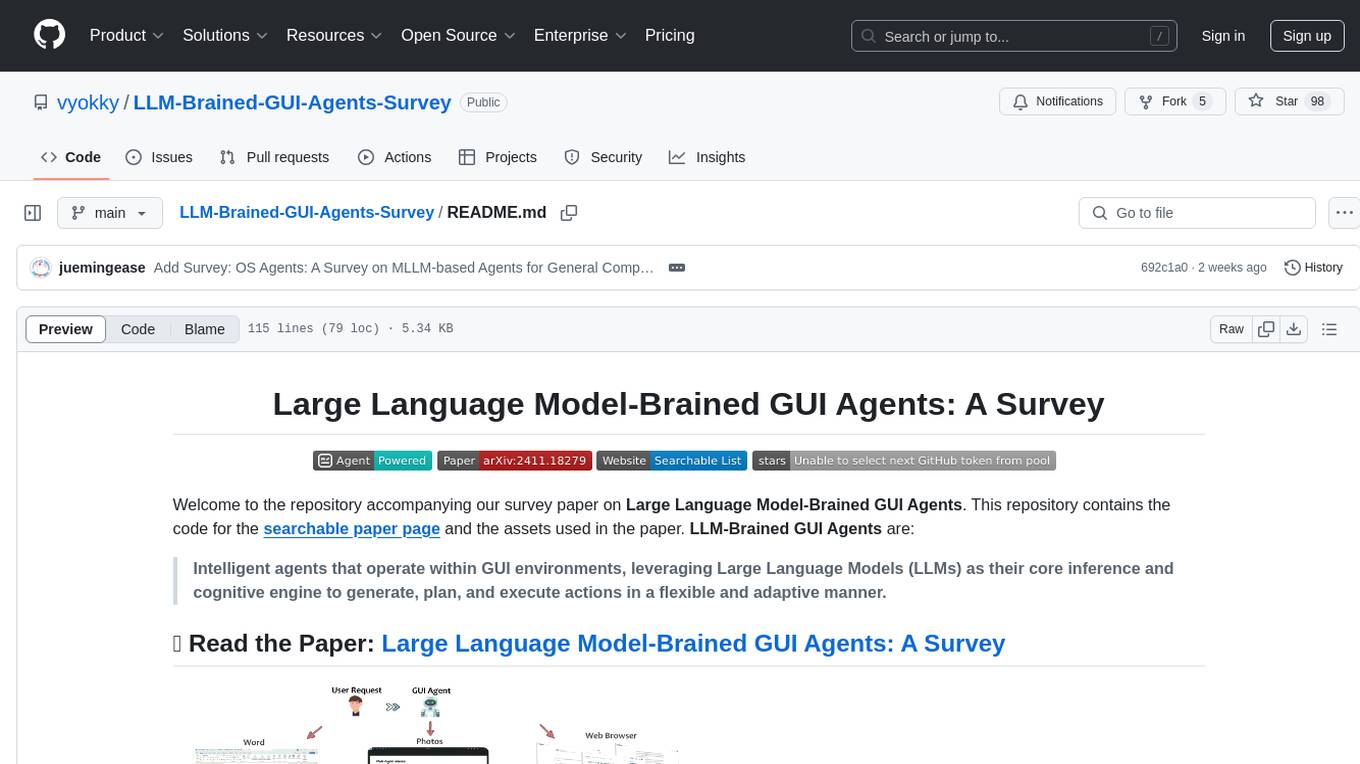
LLM-Brained-GUI-Agents-Survey
The 'LLM-Brained-GUI-Agents-Survey' repository contains code for a searchable paper page and assets used in the survey paper on Large Language Model-Brained GUI Agents. These agents operate within GUI environments, utilizing Large Language Models as their core inference and cognitive engine to generate, plan, and execute actions flexibly and adaptively. The repository also encourages contributions from the community for new papers, resources, or improvements related to LLM-Powered GUI Agents.
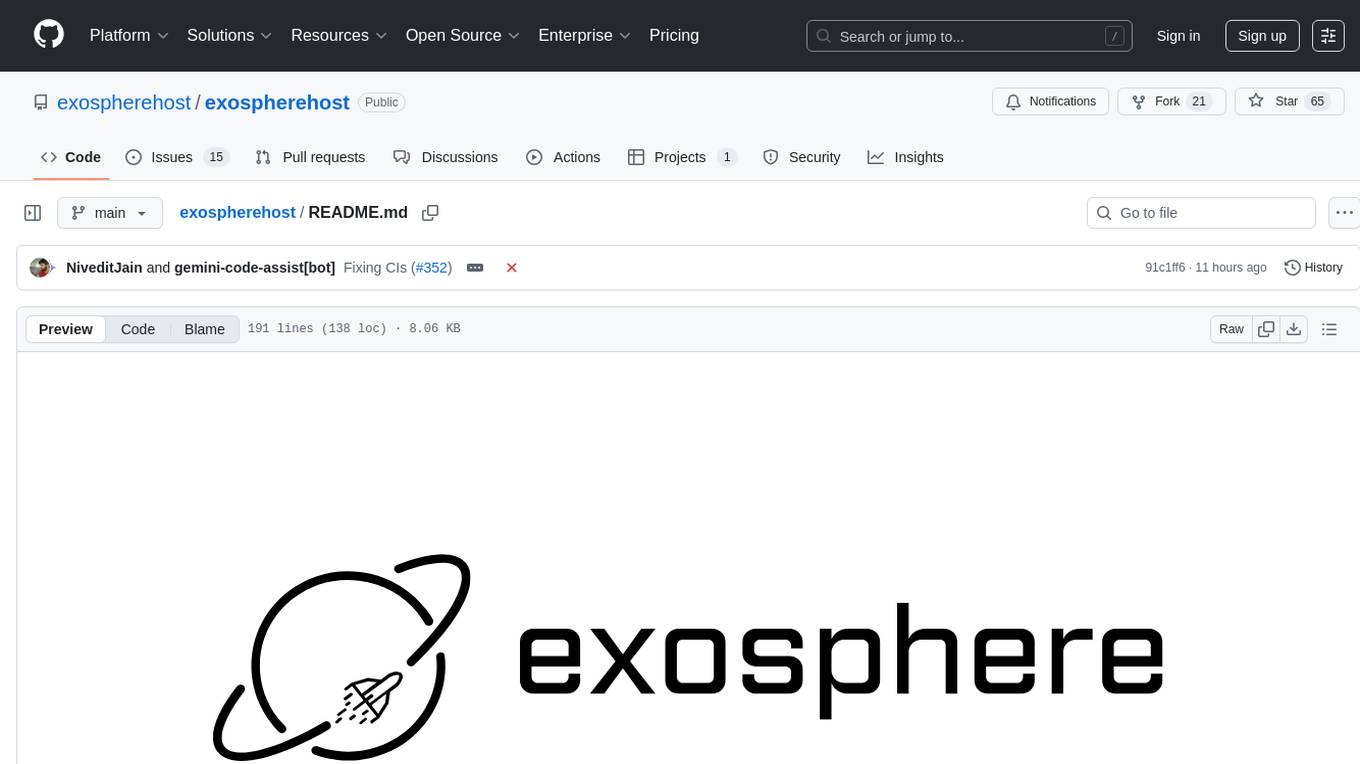
exospherehost
Exosphere is an open source infrastructure designed to run AI agents at scale for large data and long running flows. It allows developers to define plug and playable nodes that can be run on a reliable backbone in the form of a workflow, with features like dynamic state creation at runtime, infinite parallel agents, persistent state management, and failure handling. This enables the deployment of production agents that can scale beautifully to build robust autonomous AI workflows.
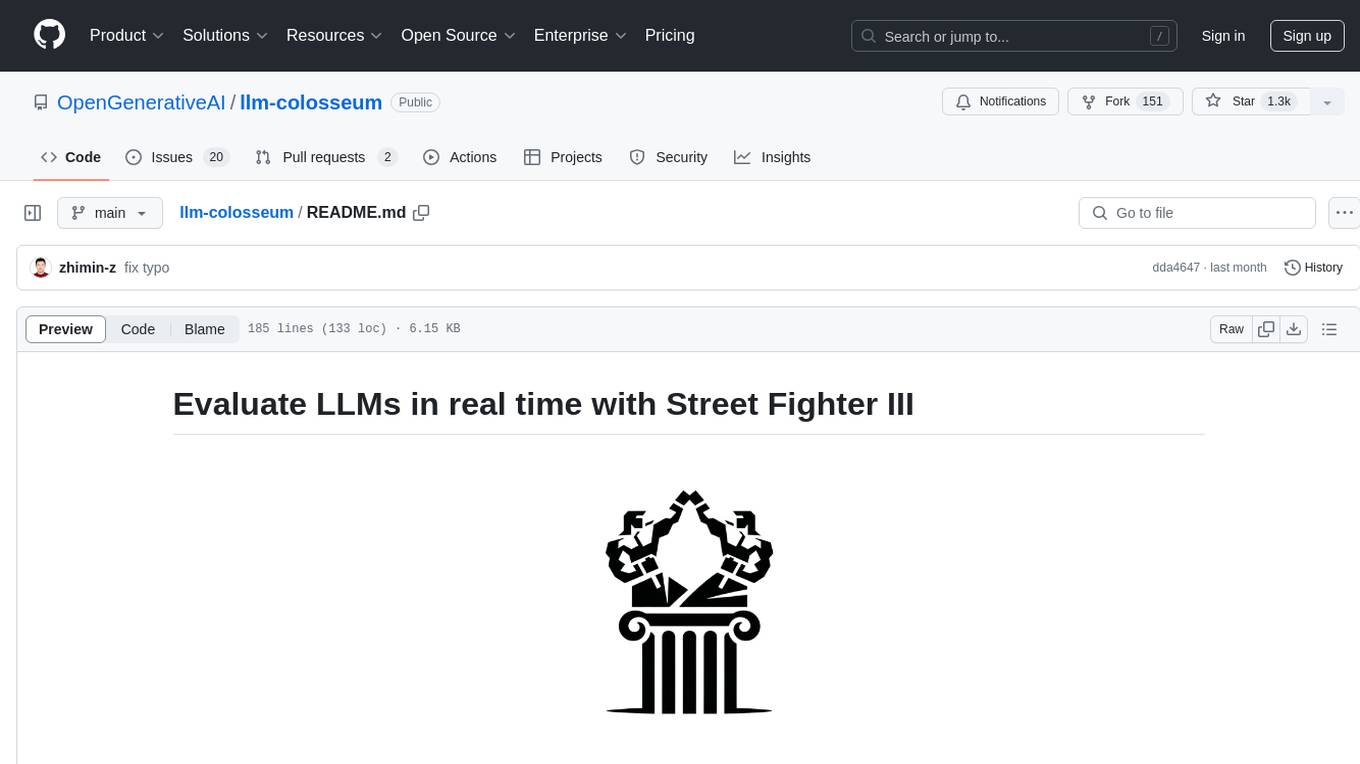
llm-colosseum
llm-colosseum is a tool designed to evaluate Language Model Models (LLMs) in real-time by making them fight each other in Street Fighter III. The tool assesses LLMs based on speed, strategic thinking, adaptability, out-of-the-box thinking, and resilience. It provides a benchmark for LLMs to understand their environment and take context-based actions. Users can analyze the performance of different LLMs through ELO rankings and win rate matrices. The tool allows users to run experiments, test different LLM models, and customize prompts for LLM interactions. It offers installation instructions, test mode options, logging configurations, and the ability to run the tool with local models. Users can also contribute their own LLM models for evaluation and ranking.
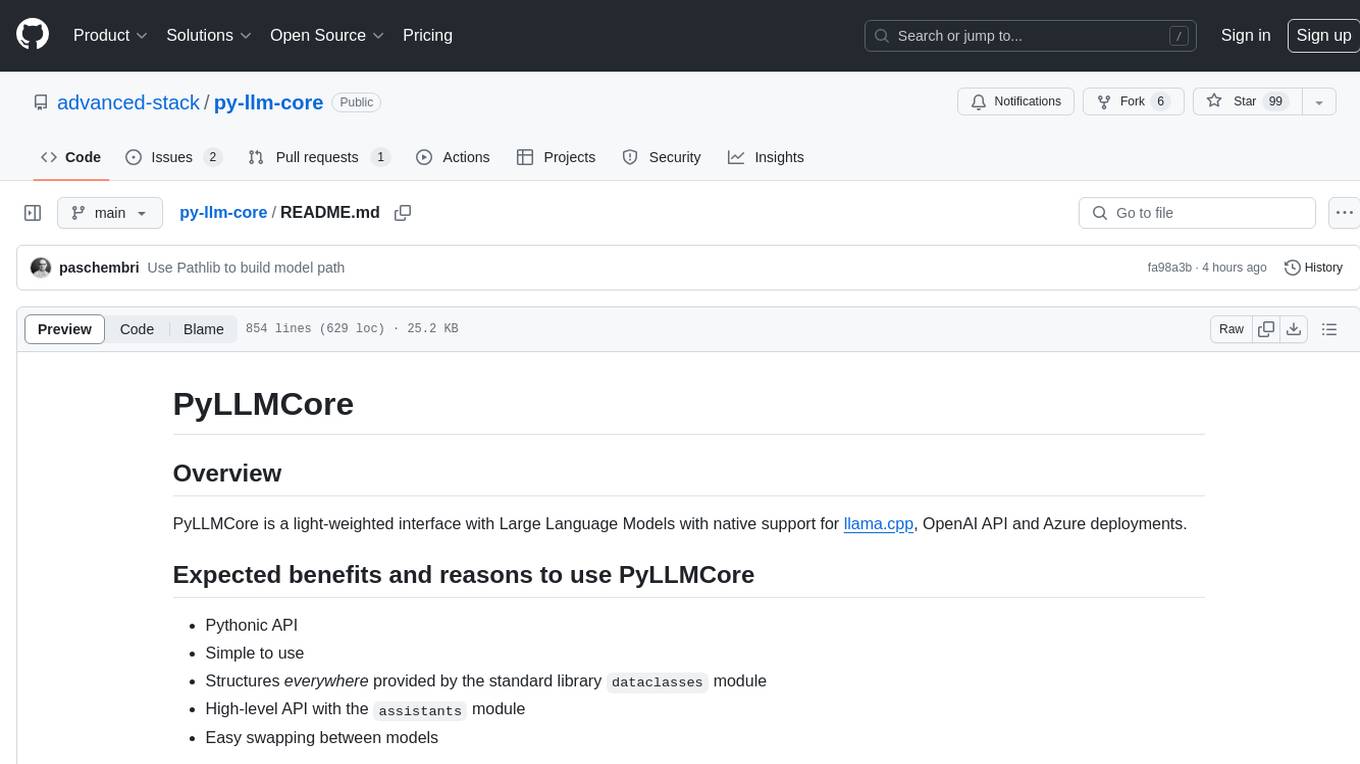
py-llm-core
PyLLMCore is a light-weighted interface with Large Language Models with native support for llama.cpp, OpenAI API, and Azure deployments. It offers a Pythonic API that is simple to use, with structures provided by the standard library dataclasses module. The high-level API includes the assistants module for easy swapping between models. PyLLMCore supports various models including those compatible with llama.cpp, OpenAI, and Azure APIs. It covers use cases such as parsing, summarizing, question answering, hallucinations reduction, context size management, and tokenizing. The tool allows users to interact with language models for tasks like parsing text, summarizing content, answering questions, reducing hallucinations, managing context size, and tokenizing text.
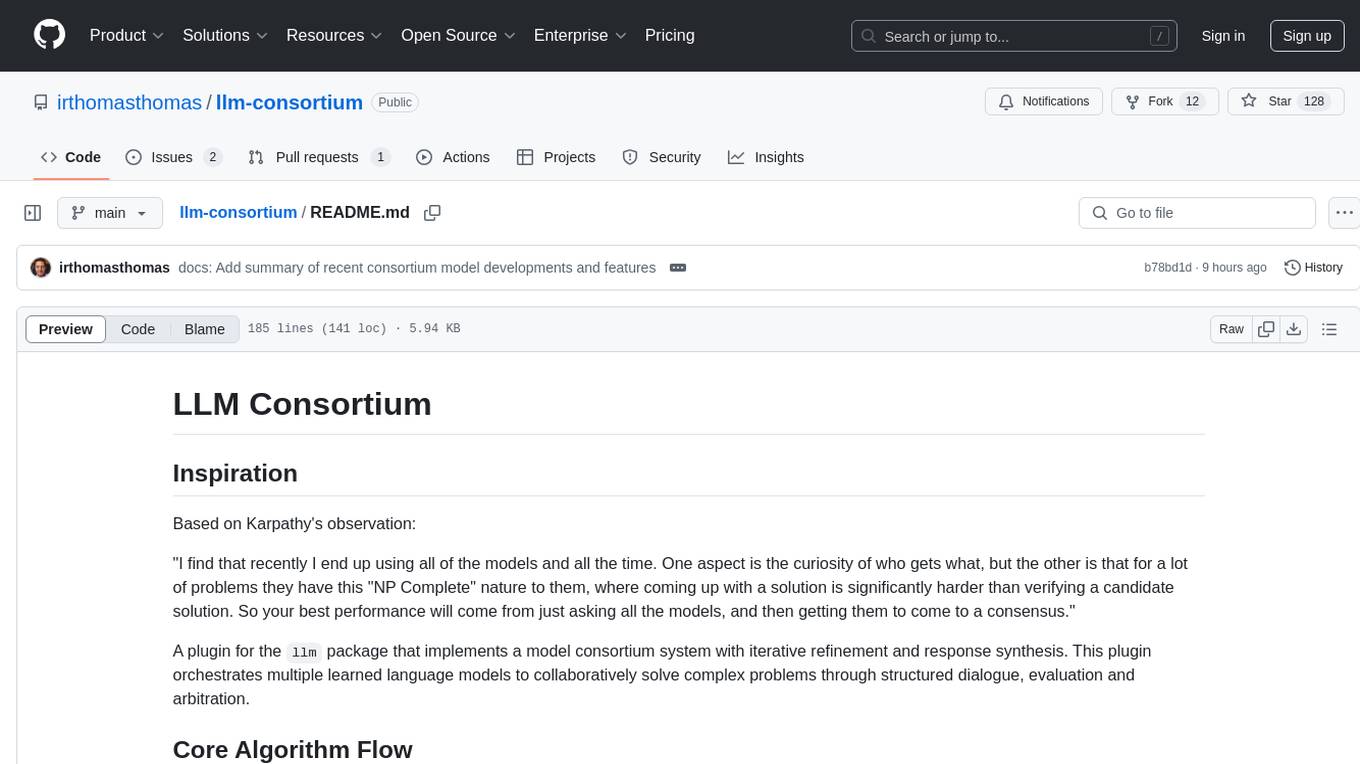
llm-consortium
LLM Consortium is a plugin for the `llm` package that implements a model consortium system with iterative refinement and response synthesis. It orchestrates multiple learned language models to collaboratively solve complex problems through structured dialogue, evaluation, and arbitration. The tool supports multi-model orchestration, iterative refinement, advanced arbitration, database logging, configurable parameters, hundreds of models, and the ability to save and load consortium configurations.
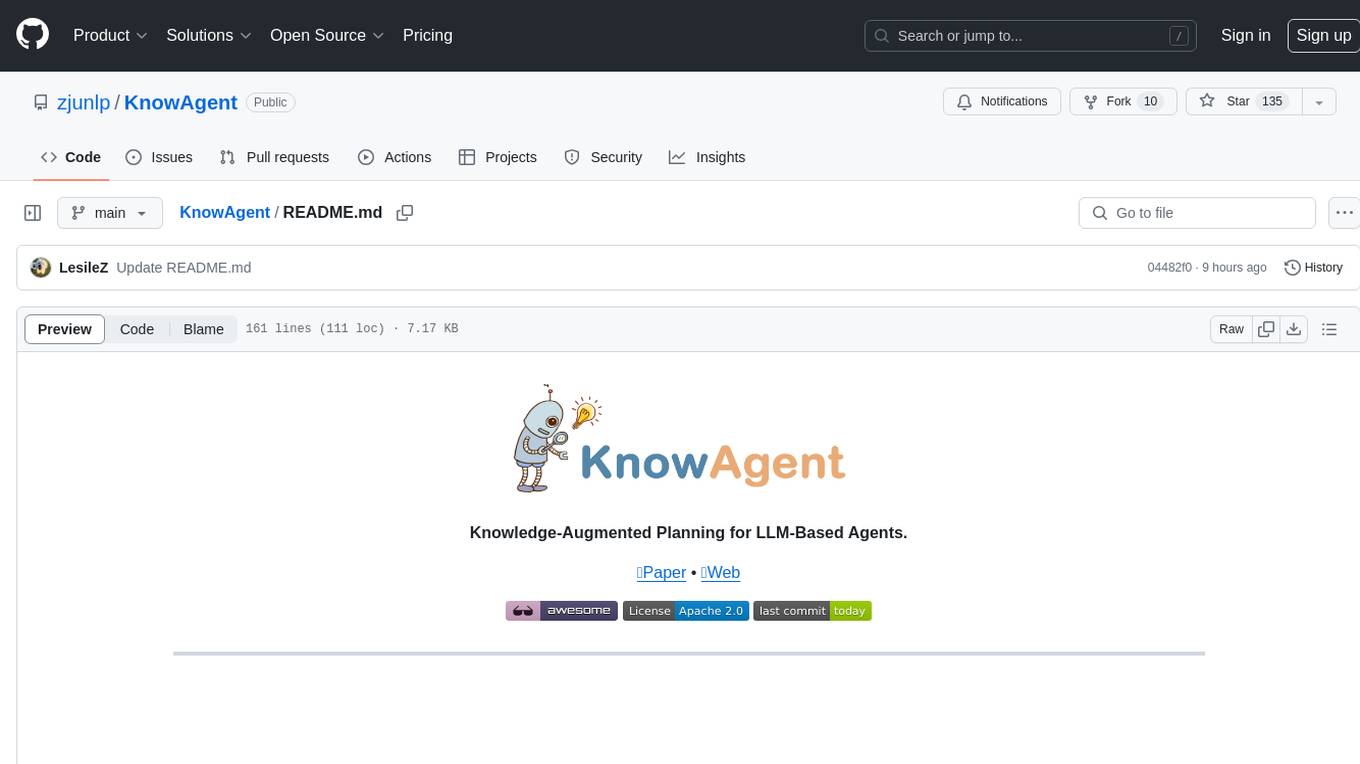
KnowAgent
KnowAgent is a tool designed for Knowledge-Augmented Planning for LLM-Based Agents. It involves creating an action knowledge base, converting action knowledge into text for model understanding, and a knowledgeable self-learning phase to continually improve the model's planning abilities. The tool aims to enhance agents' potential for application in complex situations by leveraging external reservoirs of information and iterative processes.
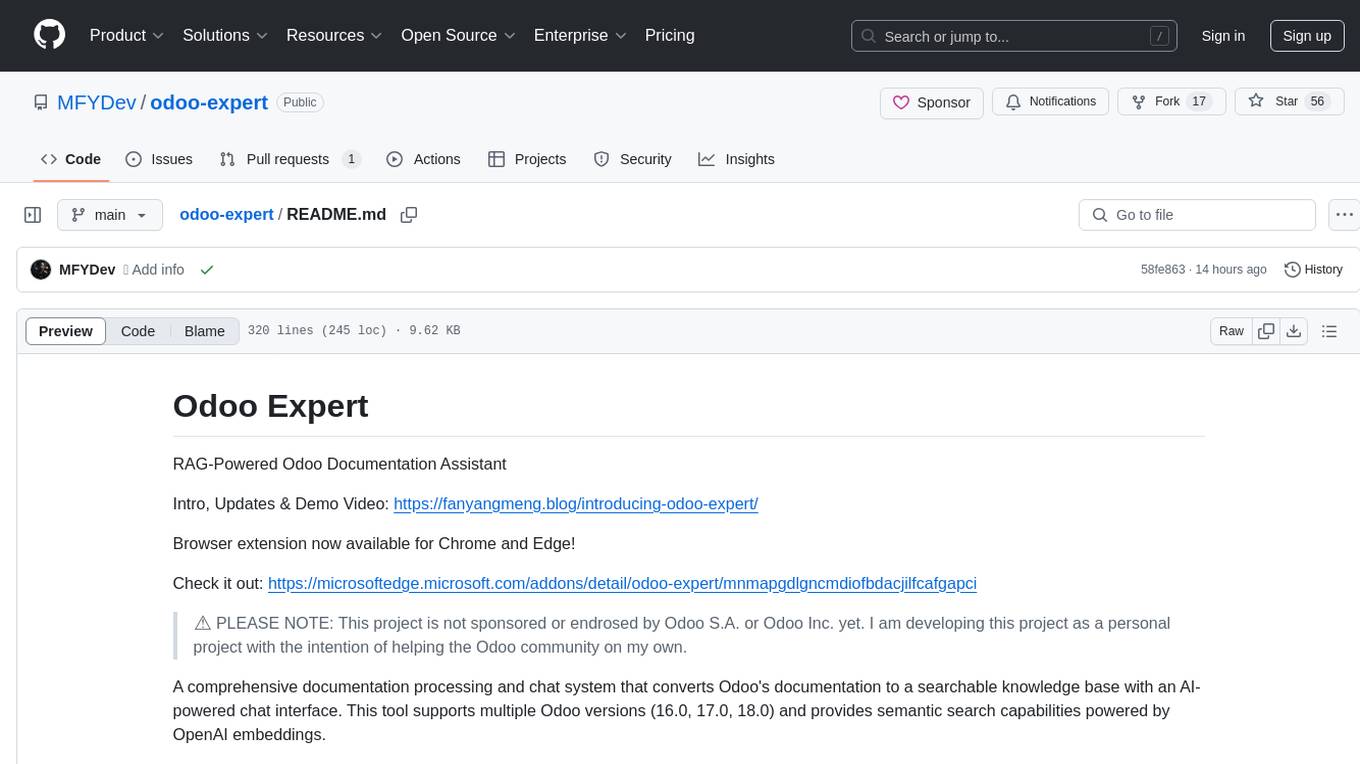
odoo-expert
RAG-Powered Odoo Documentation Assistant is a comprehensive documentation processing and chat system that converts Odoo's documentation to a searchable knowledge base with an AI-powered chat interface. It supports multiple Odoo versions (16.0, 17.0, 18.0) and provides semantic search capabilities powered by OpenAI embeddings. The tool automates the conversion of RST to Markdown, offers real-time semantic search, context-aware AI-powered chat responses, and multi-version support. It includes a Streamlit-based web UI, REST API for programmatic access, and a CLI for document processing and chat. The system operates through a pipeline of data processing steps and an interface layer for UI and API access to the knowledge base.
Pixel-Reasoner
Pixel Reasoner is a framework that introduces reasoning in the pixel-space for Vision-Language Models (VLMs), enabling them to directly inspect, interrogate, and infer from visual evidences. This enhances reasoning fidelity for visual tasks by equipping VLMs with visual reasoning operations like zoom-in and select-frame. The framework addresses challenges like model's imbalanced competence and reluctance to adopt pixel-space operations through a two-phase training approach involving instruction tuning and curiosity-driven reinforcement learning. With these visual operations, VLMs can interact with complex visual inputs such as images or videos to gather necessary information, leading to improved performance across visual reasoning benchmarks.
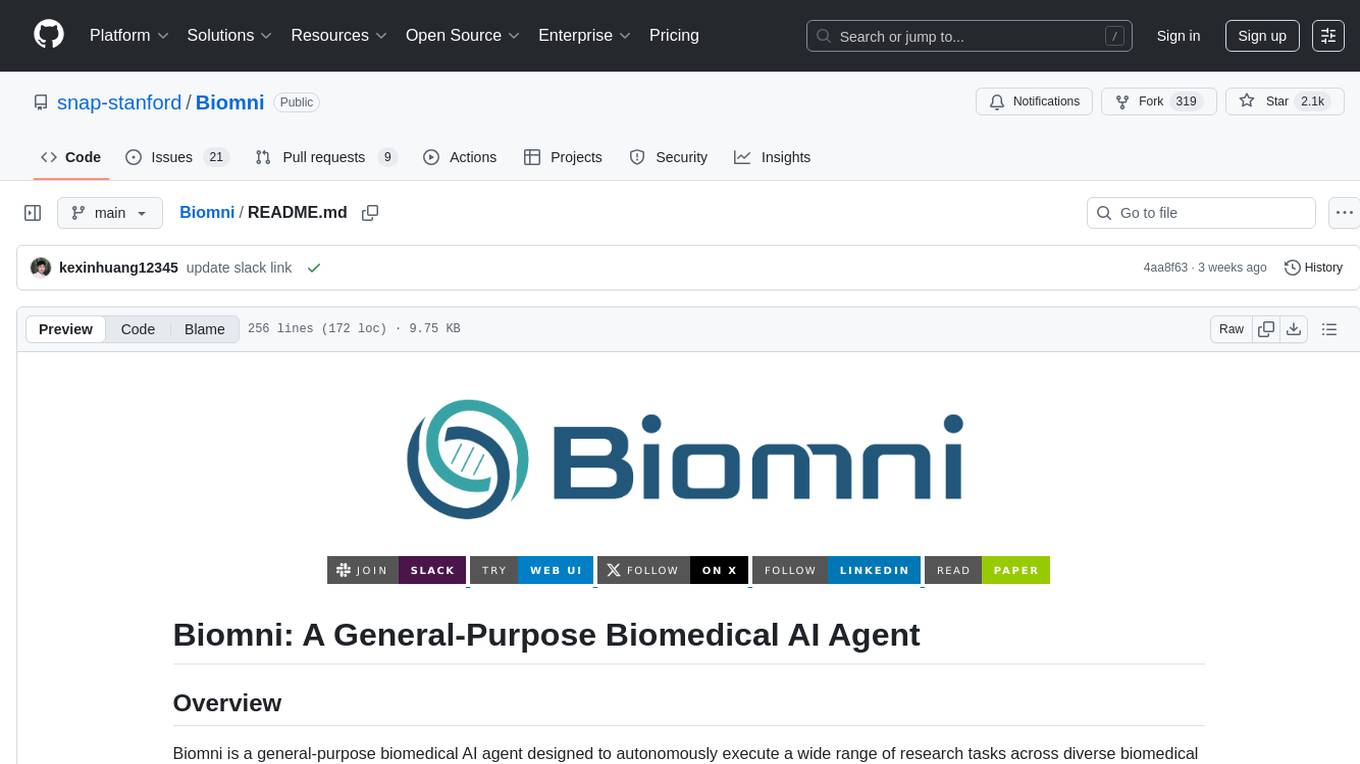
Biomni
Biomni is a general-purpose biomedical AI agent designed to autonomously execute a wide range of research tasks across diverse biomedical subfields. By integrating cutting-edge large language model (LLM) reasoning with retrieval-augmented planning and code-based execution, Biomni helps scientists dramatically enhance research productivity and generate testable hypotheses.
For similar tasks

Avalon-LLM
Avalon-LLM is a repository containing the official code for AvalonBench and the Avalon agent Strategist. AvalonBench evaluates Large Language Models (LLMs) playing The Resistance: Avalon, a board game requiring deductive reasoning, coordination, collaboration, and deception skills. Strategist utilizes LLMs to learn strategic skills through self-improvement, including high-level strategic evaluation and low-level execution guidance. The repository provides instructions for running AvalonBench, setting up Strategist, and conducting experiments with different agents in the game environment.
For similar jobs

weave
Weave is a toolkit for developing Generative AI applications, built by Weights & Biases. With Weave, you can log and debug language model inputs, outputs, and traces; build rigorous, apples-to-apples evaluations for language model use cases; and organize all the information generated across the LLM workflow, from experimentation to evaluations to production. Weave aims to bring rigor, best-practices, and composability to the inherently experimental process of developing Generative AI software, without introducing cognitive overhead.

LLMStack
LLMStack is a no-code platform for building generative AI agents, workflows, and chatbots. It allows users to connect their own data, internal tools, and GPT-powered models without any coding experience. LLMStack can be deployed to the cloud or on-premise and can be accessed via HTTP API or triggered from Slack or Discord.

VisionCraft
The VisionCraft API is a free API for using over 100 different AI models. From images to sound.

kaito
Kaito is an operator that automates the AI/ML inference model deployment in a Kubernetes cluster. It manages large model files using container images, avoids tuning deployment parameters to fit GPU hardware by providing preset configurations, auto-provisions GPU nodes based on model requirements, and hosts large model images in the public Microsoft Container Registry (MCR) if the license allows. Using Kaito, the workflow of onboarding large AI inference models in Kubernetes is largely simplified.

PyRIT
PyRIT is an open access automation framework designed to empower security professionals and ML engineers to red team foundation models and their applications. It automates AI Red Teaming tasks to allow operators to focus on more complicated and time-consuming tasks and can also identify security harms such as misuse (e.g., malware generation, jailbreaking), and privacy harms (e.g., identity theft). The goal is to allow researchers to have a baseline of how well their model and entire inference pipeline is doing against different harm categories and to be able to compare that baseline to future iterations of their model. This allows them to have empirical data on how well their model is doing today, and detect any degradation of performance based on future improvements.

tabby
Tabby is a self-hosted AI coding assistant, offering an open-source and on-premises alternative to GitHub Copilot. It boasts several key features: * Self-contained, with no need for a DBMS or cloud service. * OpenAPI interface, easy to integrate with existing infrastructure (e.g Cloud IDE). * Supports consumer-grade GPUs.

spear
SPEAR (Simulator for Photorealistic Embodied AI Research) is a powerful tool for training embodied agents. It features 300 unique virtual indoor environments with 2,566 unique rooms and 17,234 unique objects that can be manipulated individually. Each environment is designed by a professional artist and features detailed geometry, photorealistic materials, and a unique floor plan and object layout. SPEAR is implemented as Unreal Engine assets and provides an OpenAI Gym interface for interacting with the environments via Python.

Magick
Magick is a groundbreaking visual AIDE (Artificial Intelligence Development Environment) for no-code data pipelines and multimodal agents. Magick can connect to other services and comes with nodes and templates well-suited for intelligent agents, chatbots, complex reasoning systems and realistic characters.





